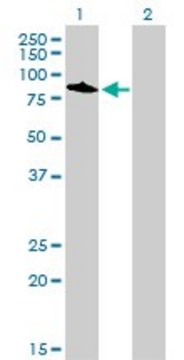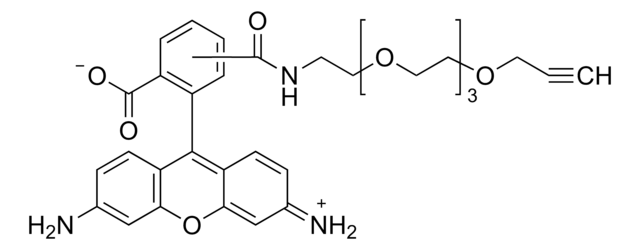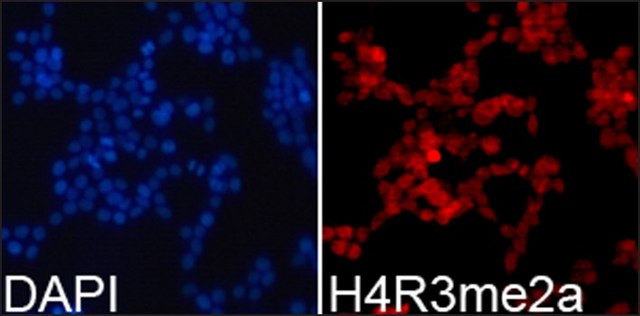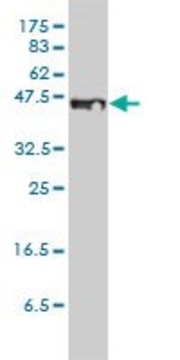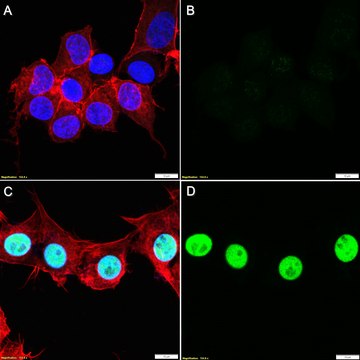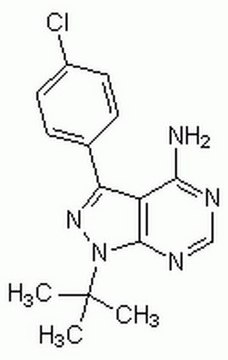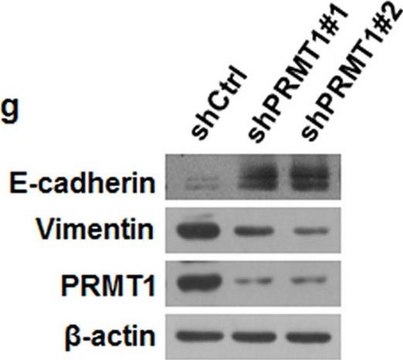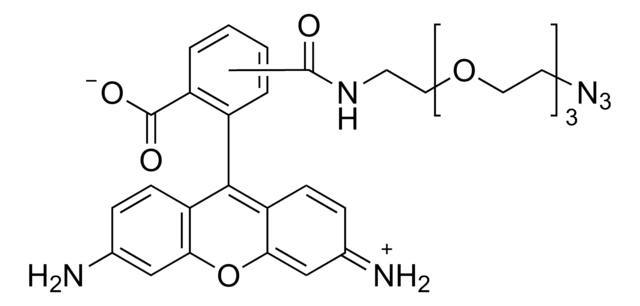All Photos(2)
Synonym(s):
Tudor domain-containing protein 3
UNSPSC Code:
12352203
eCl@ss:
32160702
NACRES:
NA.41
Recommended Products
biological source
rabbit
Quality Level
antibody form
unpurified
antibody product type
primary antibodies
clone
polyclonal
species reactivity
human
technique(s)
ChIP: suitable
immunoprecipitation (IP): suitable
western blot: suitable
isotype
IgG
NCBI accession no.
UniProt accession no.
shipped in
ambient
target post-translational modification
unmodified
Gene Information
human ... TDRD3(81550)
General description
Tudor domain-containing protein 3 (UniProt: Q9H7E2; also known as TDRD3) is encoded by the TDRD3 gene (Gene ID: 81550) in human. TDRD3 belongs to an evolutionarily conserved family of 12 proteins (TDRD1-TDRD12) that contain one or more Tudor domains, which recognize symmetric dimethylarginine (sDMA) residues with the exception of TDRD3, which associates selectively with asymmetric dimethylarginine. TDRD3, in addition to its Tudor domain, contains a putative nucleic acid recognition motif and an ubiquitin-associated domain. Tudor domains are highly conserved throughout evolution: they can be found in virtually all organisms, from bacteria to mammals. TDRD3 has been reported in heart, brain, placenta, lung, liver, skeletal muscle, kidney, and pancreas. It is found both in the nucleus and in cytoplasm. In nucleus, it acts as a coactivator and recognizes and binds asymmetric dimethylation on the core histone tails. The Tudor domain specifically recognizes and binds asymmetric dimethylation of histone H3 ′Arg-17′ (H3R17me2a) and histones H4 ′Arg-3′, 2 tags for epigenetic transcriptional activation. In cytoplasm, it may play a role in the assembly and/or disassembly of mRNA stress granules and in the regulation of translation of target mRNAs by binding Arg/Gly-rich motifs (GAR) in dimethylarginine-containing proteins. TDRD3 is reported to act as a positive regulator of c-MYC gene transcription by recruiting topoisomerase IIIB (TOP3B) to the c-MYC gene promoter region via H4R3me2a recognition. Overexpression of TDRD3 gene has a strong predictive value for poor prognosis of estrogen receptor-negative breast cancers. (Ref.: Goulet, I et al. (2008). Hum. Mol. Genet. 17(19):3055-3074; Sikorsky, T et al. (2012). Nucleic Acids Res. 40(22):11748-55).
Specificity
This polyclonal antibody detects the Tudor domain containing protein 3 in human. It targets an epitope within 258 amino acids in the C-terminal half.
Immunogen
Epitope: domain of:
GST-tagged recombinant fragment corresponding to 258 amino acids from the C-terminal half of human Tudor domain-containing protein 3.
Application
Anti-TDRD3, Cat. No. ABE1868, is a highly specific rabbit polyclonal antibody that targets Tudor domain-containing protein 3 and has been tested in Chromatin Immunoprecipitation (ChIP), Immunoprecipitation, and Western Blotting.
Research Category
Epigenetics & Nuclear Function
Epigenetics & Nuclear Function
Western Blotting Analysis: A 1:500 dilution from a representative lot detected TDRD3 in 20 µL of MCF7 cell lysate.
Immunoprecipitation Analysis: A representative lot detected TDRD3 in Immunoprecipitation applications (Yang, Y., et. al. (2014). Mol Cell. 53(3):484-97).
Chromatin Immunoprecipitation (ChIP) Analysis: A representative lot detected TDRD3 in Chromatin Immunoprecipitation applications (Yang, Y., et. al. (2014). Mol Cell. 53(3):484-97;Yang, Y., et. al. (2010). Mol Cell. 40(6):1016-23).
Immunoprecipitation Analysis: A representative lot detected TDRD3 in Immunoprecipitation applications (Yang, Y., et. al. (2014). Mol Cell. 53(3):484-97).
Chromatin Immunoprecipitation (ChIP) Analysis: A representative lot detected TDRD3 in Chromatin Immunoprecipitation applications (Yang, Y., et. al. (2014). Mol Cell. 53(3):484-97;Yang, Y., et. al. (2010). Mol Cell. 40(6):1016-23).
Quality
Evaluated by Immunoprecipitation in MCF7 cell lysate.
Immunoprecipitation Analysis: 10 µg of this antibody immunoprecipitated TDRD3 in 500 µg of MCF7 cell lysate.
Immunoprecipitation Analysis: 10 µg of this antibody immunoprecipitated TDRD3 in 500 µg of MCF7 cell lysate.
Target description
~85 kDa observed; 73.18 kDa calculated. Uncharacterized bands may be observed in some lysate(s).
Physical form
Format: Unpurified
Rabbit polyclonal antiserum with 0.05% sodium azide.
Unpurified
Storage and Stability
Stable for 1 year at -20°C from date of receipt.
Handling Recommendations: Upon receipt and prior to removing the cap, centrifuge the vial and gently mix the solution. Aliquot into microcentrifuge tubes and store at -20°C. Avoid repeated freeze/thaw cycles, which may damage IgG and affect product performance.
Handling Recommendations: Upon receipt and prior to removing the cap, centrifuge the vial and gently mix the solution. Aliquot into microcentrifuge tubes and store at -20°C. Avoid repeated freeze/thaw cycles, which may damage IgG and affect product performance.
Other Notes
Concentration: Please refer to lot specific datasheet.
Disclaimer
Unless otherwise stated in our catalog or other company documentation accompanying the product(s), our products are intended for research use only and are not to be used for any other purpose, which includes but is not limited to, unauthorized commercial uses, in vitro diagnostic uses, ex vivo or in vivo therapeutic uses or any type of consumption or application to humans or animals.
WGK
WGK 1
Certificates of Analysis (COA)
Search for Certificates of Analysis (COA) by entering the products Lot/Batch Number. Lot and Batch Numbers can be found on a product’s label following the words ‘Lot’ or ‘Batch’.
Already Own This Product?
Find documentation for the products that you have recently purchased in the Document Library.
Lifeng Huang et al.
Nucleic acids research, 46(6), 3061-3074 (2018-02-23)
DNA topoisomerase 3B (TOP3B) is unique among all mammalian topoisomerases for its dual activities that resolve both DNA and RNA topological entanglements to facilitate transcription and translation. However, the mechanism by which TOP3B activity is regulated is still elusive. Here
Our team of scientists has experience in all areas of research including Life Science, Material Science, Chemical Synthesis, Chromatography, Analytical and many others.
Contact Technical Service